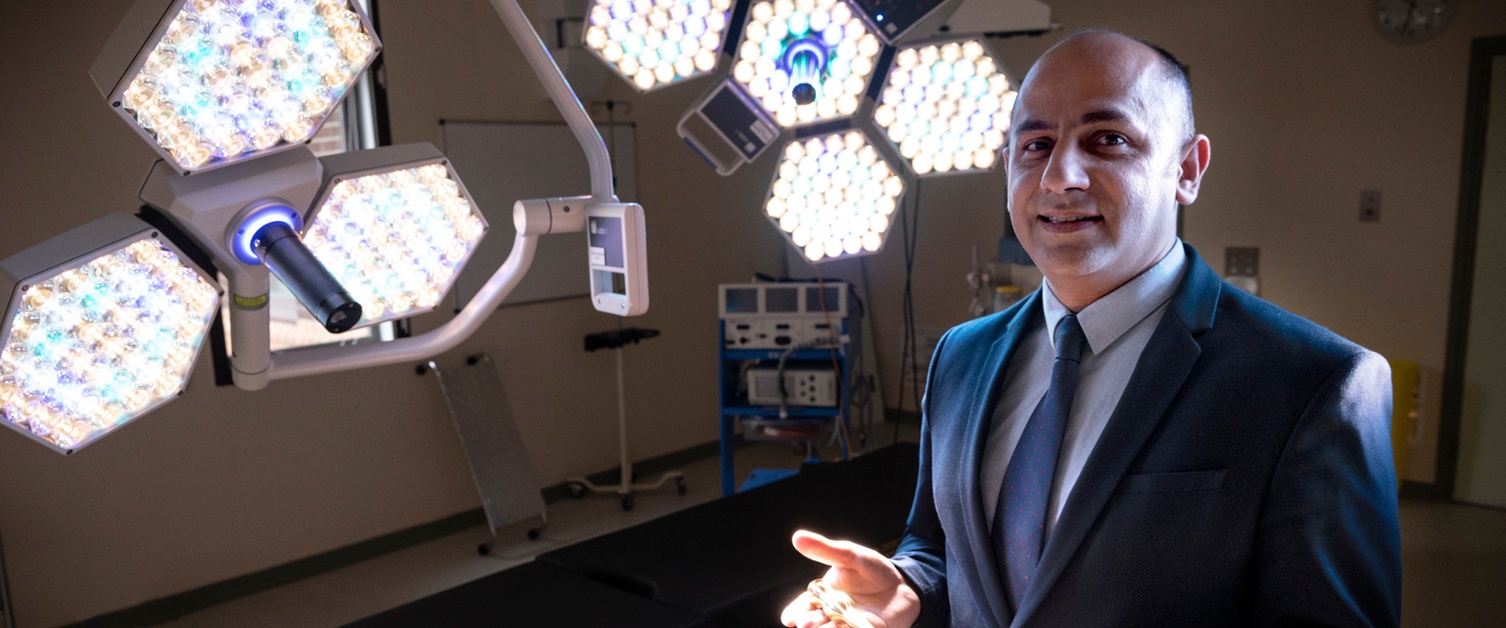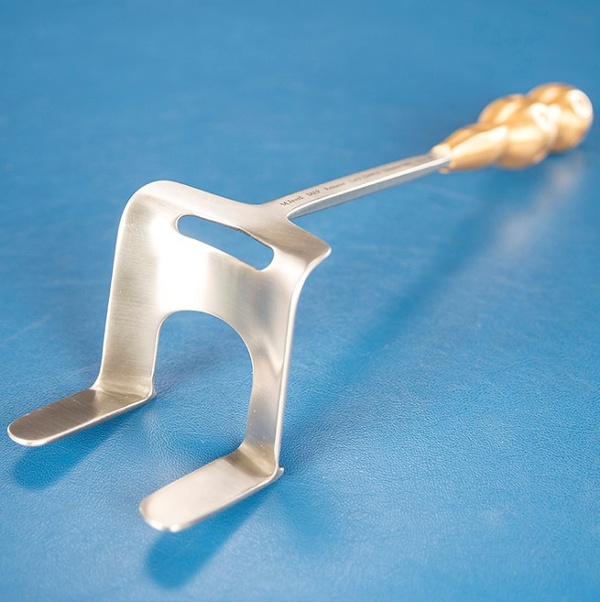New surgical instrument invented by Morriston plastic surgeon

A plastic surgeon in Morriston Hospital has invented a specialist instrument for use in breast reconstruction surgery and named it the Swansea Retractor after the city where he works.
Mr Muhammad Umair Javed (pictured above), a consultant plastic and reconstructive breast surgeon based in the Welsh Centre for Burns and Plastic Surgery, hopes the reconstructive breast surgery specific abdominal retractor, the first of its kind in the world, will improve patient safety.
The new instrument enables the surgeon to have a better view of their work, helping to avoid causing accidental injury.
Mr Javed said: “Previously, there weren’t any instruments designed for this specific operation to reconstruct a breast. In the past we used a combination of different generic instruments to push the tissue out of the way to get a better view of things.
“I thought that one instrument would be easier to use and give a better view.
“The Swansea Retractor reduces the number of instruments you have to use. You just put the instrument in and it gives you enough vision to do the dissection safely. It makes dissection of the blood vessels easier.
“It’s all about improving the products that we have to improve patient safety. If you can see better, then you are less likely to make a mistake.”

Mr Javed, who has now shared his work with the American Society of Plastic Surgeons and a medical journal called Annals of Breast Surgery, explained the invention process.
He said: “I identified the issue during my training in Morriston Hospital when I would assist my senior colleagues and saw that there was an opportunity to improve.
“We used a 3D printer to produce the instrument, to see how it would look, and did a lot of revisions.
“Next I found a company able to make the prototype for me. Like all surgical instruments it’s made from stainless steel, which is robust and sturdy and good for longevity.
“Then I went through our Research and Development department and had it approved for use within Swansea Bay University Health Board.”
There is only one Swansea Retractor in use at the moment but Mr Javed hopes that it will soon be made commercially available and used as a matter of routine around the world.
He said: “I have only made one at the moment and need to make more of different sizes, and then it can be part of all surgical procedures for breast reconstruction.
“Patients come in different sizes so you can’t just use one sized instrument in everybody. We need to make three to four different sizes.
“Once we have the different sizes available we need to find a medical company willing to pick it up and get it out on the market so everyone can see that it’s available to them.”
Mr Javed is currently working on his next invention.
“Making the Swansea Retractor gave me a lot of experience as to how to take an idea and develop something. I’ve used the experience I’ve gained to develop a second instrument, I just need to develop a prototype and test it to see if it works.”
Mr Javed praised his colleagues for supporting his work.
“This achievement was not possible without the support of my colleagues Mr Mark Cooper, Mr Leong Hiew, Miss Dai Nguyen, Mr Amar Ghattaura and Mr Steve Atherton at the Welsh Centre for Burns and Plastic Surgery.”
Consultant Plastic and Reconstructive Breast Surgeon, Mr Leong Hiew, said: “This is a great achievement by Mr Javed and fantastic news for the plastic surgery department and Swansea Bay University Health Board.”
Mr Javed is a recipient of several national and international awards & prizes and has fellowships in reconstructive breast and microsurgery from world-renowned plastic surgery centres in Vancouver and Adelaide.
He is a fellow of reconstructive breast surgery at the University of British Columbia, Vancouver, where he received advanced reconstructive surgery training by a team of top plastic surgeons led by Dr Sheina Macadam and Dr Peter Lennox.
Rydym yn croesawu gohebiaeth a galwadau ffôn yn y Gymraeg neu'r Saesneg. Atebir gohebiaeth Gymraeg yn y Gymraeg, ac ni fydd hyn yn arwain at oedi. Mae’r dudalen hon ar gael yn Gymraeg drwy bwyso’r botwm ar y dde ar frig y dudalen.
We welcome correspondence and telephone calls in Welsh or English. Welsh language correspondence will be replied to in Welsh, and this will not lead to a delay. This page is available in Welsh by clicking ‘Cymraeg’ at the top right of this page.